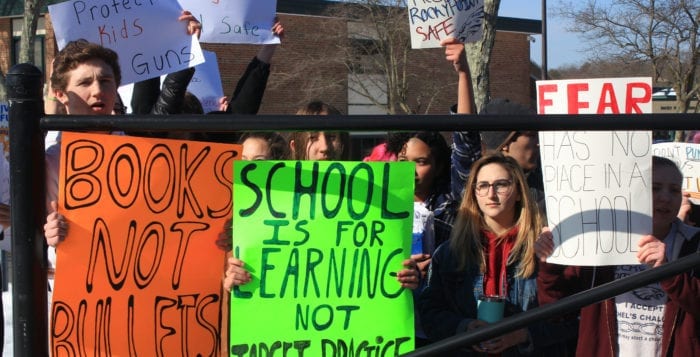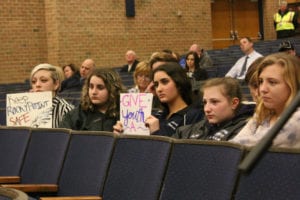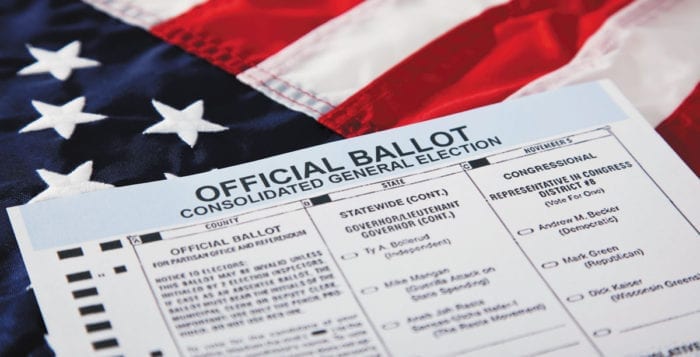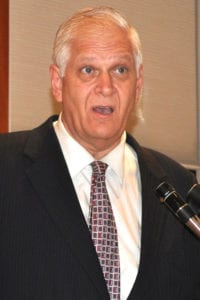Recently, Gov. Andrew Cuomo (D) signed into law legislation sponsored by state Assemblyman Steve Englebright (D-Setauket), while Suffolk County Executive Steve Bellone (D) announced that police would be cracking down harder on those who violate the Move Over law. And with temperatures rising, county Legislator Kara Hahn (D-Setauket) challenges residents to get out and enjoy their local parks.
Governor signs Englebright’s legislation banning offshore oil and gas drilling
With singer Billy Joel on hand, Cuomo signed legislation sponsored by Englebright and state Sen. Todd Kaminsky (D-Long Beach) into law April 30.
The legislation will prohibit the use of state-owned underwater coastal lands for oil and natural gas drilling, and prevent state agencies from authorizing leases that would facilitate the development and production of oil or natural gas. It also prohibits the development of pipelines and other infrastructure associated with exploration, development or production of oil or natural gas from New York’s coastal waters.
“This legislation takes aggressive action to protect New York’s marine environment by prohibiting offshore drilling,” Englebright said in a statement. “This law will protect and defend our waters, keeping them safe for recreation, fishing and wildlife.”
Despite the Atlantic Coast being off limits for drilling for decades, in 2017, the federal government proposed a new National Outer Continental Shelf Oil and Gas Leasing Program which would open more than 90 percent of the nation’s offshore waters to oil and gas drilling.
Englebright said the legislation will ensure the protection of endangered and threatened species as well as the state’s tourism and recreational and commercial fishing industries.
Bellone announces new campaign to crack down on Move Over state law violators
Suffolk County is cracking down on Move Over law violators with a multipronged awareness and enforcement campaign.
Bellone announced the campaign April 25 at a press conference in the hopes of increasing roadway safety for law enforcement personnel, emergency vehicles and road workers.
“Move Over is enforced for a reason — to ensure the safety of law enforcement, first responders and highway personnel,” Bellone said. “This public awareness effort is intended to protect our roads while protecting those whose job it is to enforce the rules of the road.”
Under New York State law, drivers traveling in the same direction must reduce speed and move from an adjacent lane to avoid colliding with a vehicle parked, stopped or standing on the shoulder or any portion of the highway when the vehicle is an authorized emergency response, tow truck or maintenance vehicle with its lights flashing.
The original legislation was signed into law by New York Gov. David Paterson (D) and took effect from Jan. 1, 2011. Cuomo expanded enforcement in 2012 to include maintenance and tow truck workers, and again in 2017 to include volunteer firefighters and volunteer EMTs.
Drivers who violate these laws are subject to fines of up to $150 for a first offense, $300 for a second offense within 18 months and $450 for a third offense within 18 months.
Public service announcements, including a 30-second television ad and a one-minute social media version, will educate residents on the importance of the law and how it helps keep the roads safe for police officers, emergency services personnel and roadway workers.
On April 25, the Suffolk County Police Department began using both unmarked and marked cars to crack down on violators. The department partnered with Maryland-based Rekor Recognition Systems earlier in the year to conduct a two-week study of compliance in the county.
The number of citations for the Move Over law has increased over the last five years with nearly 800 summonses issued in 2018, and since 2013 the SCPD has issued more than 2,600 summonses for Move Over law violations, according to SCPD.
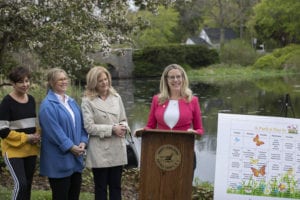
Hahn kicks off annual park challenge
County Legislator Hahn is encouraging Long Islanders to get out and explore once again.
On May 1, Hahn held a press conference at Frank Melville Memorial Park in Setauket to announce her fourth A Park a Day in May challenge. The location was the first of 31 parks that will be featured in the social media event.
For every day in May, participants will find a description with photos of a different park through Facebook. Participants are then invited to take and post a picture of themselves with the hashtags #APADIM and #aparkaday. Daily A Park a Day in May posts will be added to www.facebook.com/karahahnld5.
“The May sun has always been a beacon, drawing me back out after the biting cold of winter,” Hahn said. “With life returning to nature, my intention was to find a way to return life back into our parks.”
Linda Sanders, Frank Melville Memorial Foundation trustee, said she hopes residents will enjoy the challenge and thanked Hahn for including the park.
“I grew up visiting parks, beaches and open spaces in my youth in Southern California,” Sanders said. “My family’s trips and times together spent outside in nature are some of my fondest memories.”
Hahn’s office will also once again have Park Passport booklets available. Children can collect badges by traveling to any of 24 local parks contained in the booklet. At each park, participants search for a hidden sign and check in by either scanning a QR code or entering the web address listed on the sign, which then loads a printable logo page that the child cuts and pastes into his or her passport. Residents can call 631-854-1650 for more information.
— compiled by Rita J. Egan


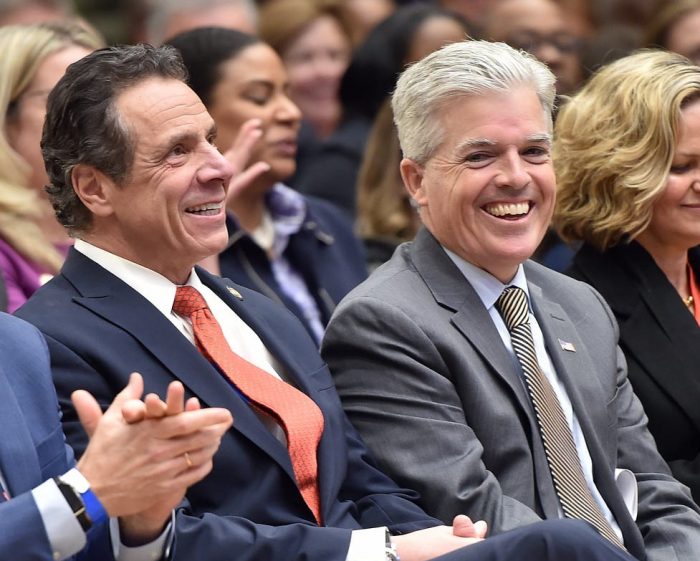
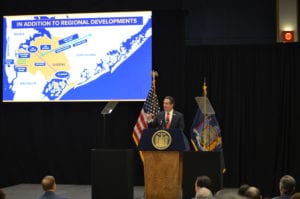 On the tax front, Long Islanders, according to the governor’s report, pay some of the highest property tax bills in the United States. Over the last 20 years, Cuomo said, local property taxes rose twice as fast as the average income.
On the tax front, Long Islanders, according to the governor’s report, pay some of the highest property tax bills in the United States. Over the last 20 years, Cuomo said, local property taxes rose twice as fast as the average income.




